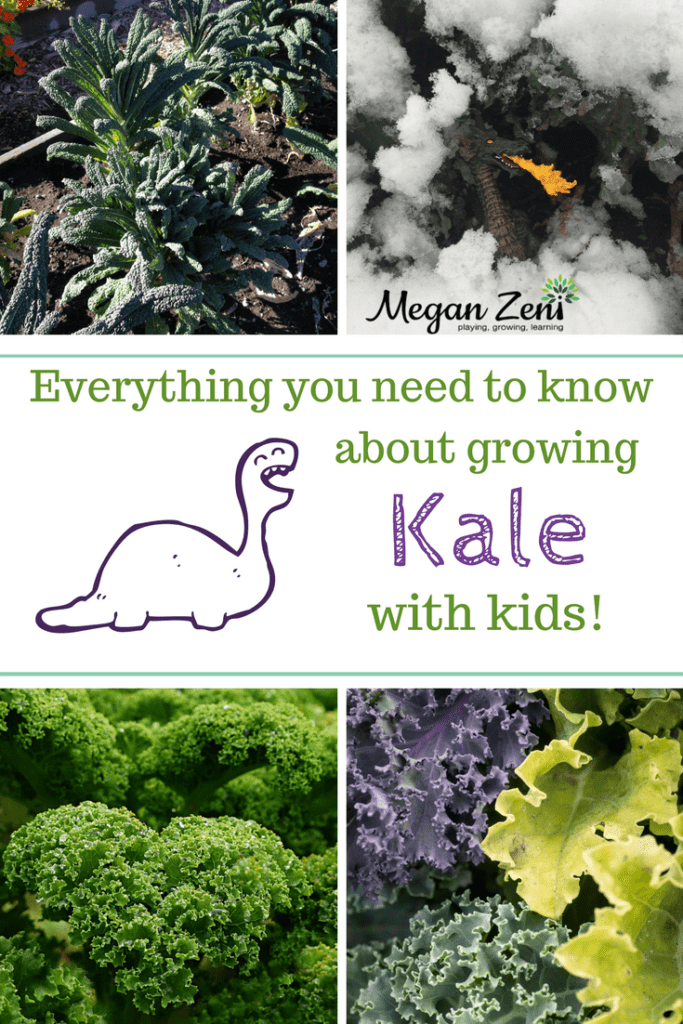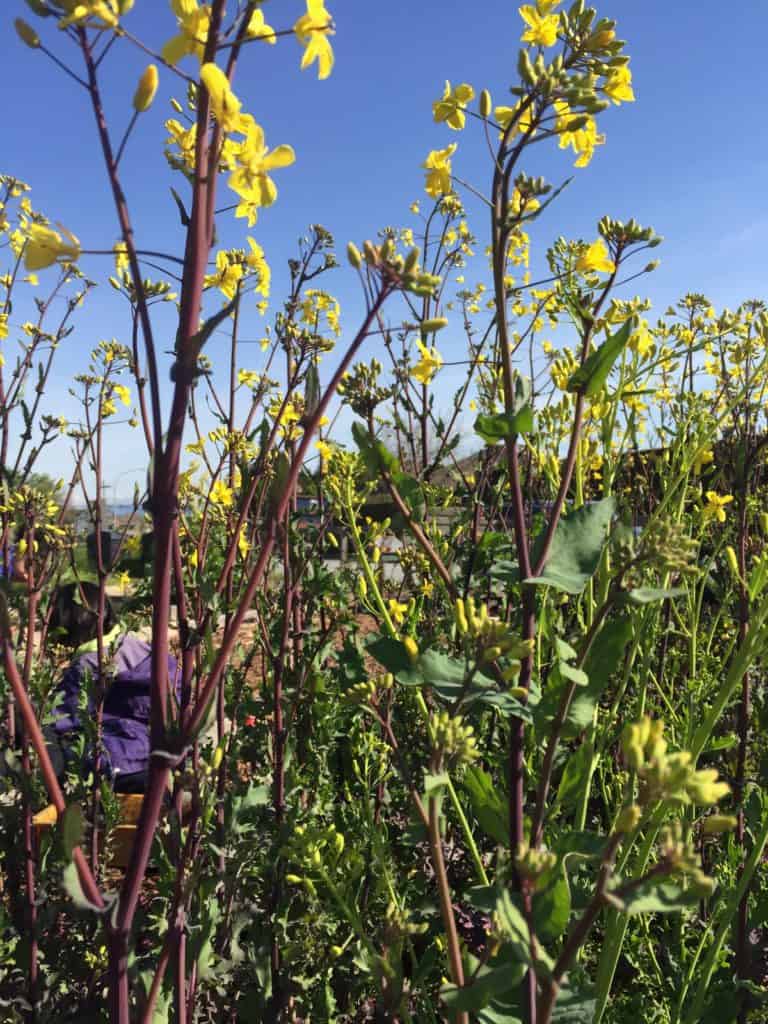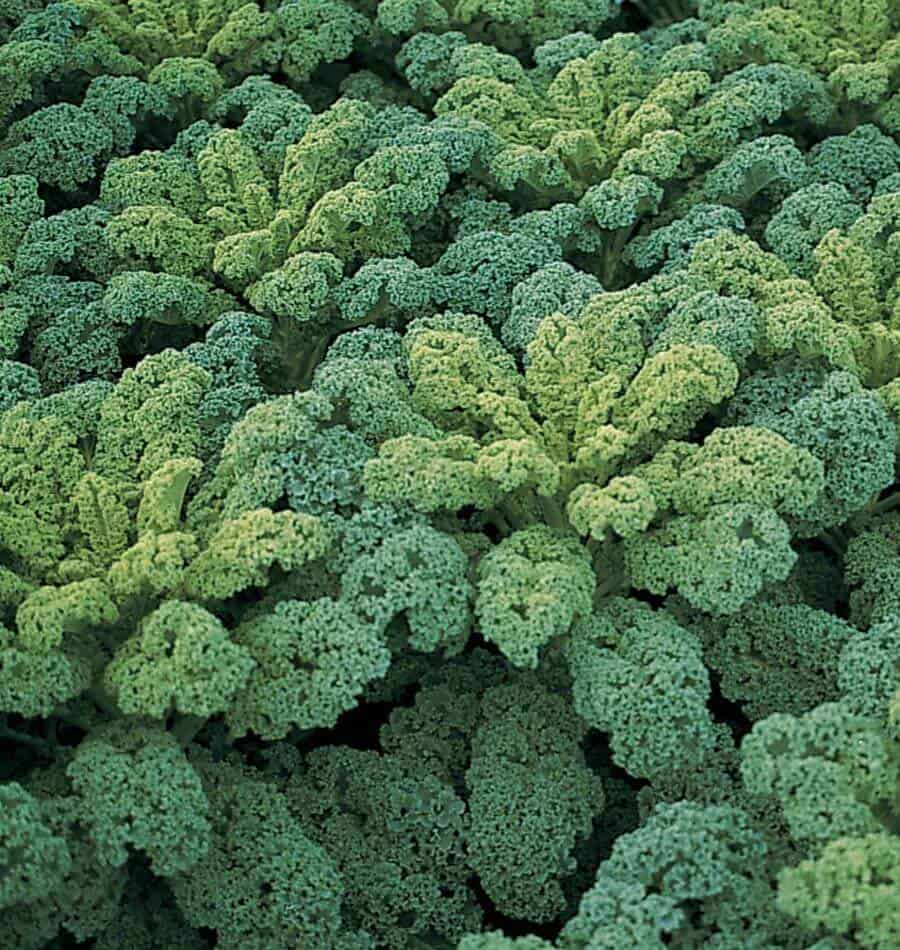- filed under: Outdoor Classrooms, Recommended Crops
How to Grow Kale With Kids

Of all the edible garden crops you can plant, kale has the reputation of the being the easiest and most resilient. It doesn’t take much know how, or specific growing conditions. Somehow, kale just grows and endures in our climate despite us! In terms of growing for school garden consumption, kale is a winner for all seasons. As a cold weather loving plant, it will provide months of interest and harvesting opportunities when the rest of your garden is resting. Here are my top tips on how to grow kale with kids in a west coast backyard or school garden. A reminder that this post is intended as a helpful step-by-step guide on how to grow kale with kids in school or backyard gardens, my advice is tailored to growing kale specifically with children, or in a school garden context. Some advice might might be different than conventional gardening advice for that reason.
Planting Kale
Kale can be started with seedlings or from seed. It is one of the most reliable and easiest crops to grow from seed, so if you are a newbie and looking for a successful crop to start from seed, kale is your friend! Seeds are inexpensive to purchase. I always choose WestCoast seeds for their quality and reliability. Be sure to rotate the location of your kale every year. It is recommended you do not plant it in the same garden bed more than once every 4 years to avoid kale specific pests and diseases. West Coast Seeds recommends you add lime to your soil about 3 weeks prior to planting to amend the pH as our soil here on the west coast tends to be acidic. In my experience, kale will grow easily without the addition of lime, but if you are looking to up your yield, you can consider adding lime. Kale prefers a full sun location, but is tolerant of some shade. Here’s a quick video on how to plant kale seeds:
Strategic Planting For School Gardens
Kale is a biennial plant. This means it has a life span that will carry over into a second school year. If you want kale available to harvest in the winter, it is best to plant new seeds at the end of the school year, in late June. Over the summer and into the fall you will have young, tender kale to harvest. The plants will go on to survive just about any winter, so long as they have not grown so large by winter that snowfall damages the stalks. In the spring, as the weather warms up, the plants will have a new burst of growth called vernalization. After the dormancy of winter, the warmth signals the plants to set seeds and begin the reproductive part of its life cycle. In our school garden, this generally means that the flowers will arrive in late spring, providing an early source of food for our pollinator friends. These flowers can be eaten and they are popular with children as an early spring garden snack. They are a bit spicy! But be sure to leave one or two kale plants in the garden well past their flowering, so the bees have a source of energy and the seeds have time to mature and can be saved later in the summer.

Caring for Kale
Kale requires very little in the way of maintenance over the growing season. It is drought tolerant, but you will see the leaves begin to wilt and the quality of flavour diminish if left for too long without a deep watering. Towards the end of the school year, or earlier if it is an especially warm spring, you can have the kids gather grass clippings from the mown school-yard to lay around the shallow roots of the kale plants. This green mulching helps prevent moisture loss and keeps soil temperatures cooler.
Harvesting Kale
Kale is a great crop to begin teaching sustainable harvesting to children. There are generally many, many more leaves than children in the class, which means the frenzy to get the most is diminished and everyone can have their fill of kale. Teach children to harvest the bottom leaves only. This helps the plant retain its ability to photosynthesize. When harvesting kale, either use a pair of sharp scissors, or hold the stalk with one hand and gently tug the leaf away from the stalk with the other. I am firm with children that they may take as much as they like, but they must eat leaves one-at-a-time in the garden. Pick one, eat one, is the rule. Take only what you need and save some for others is the general guideline in our school garden. It’s a happy problem that we have to have rules for how much kale you can eat from the garden!
Kale has a different taste depending on the time of year it is harvested. During or after a cold winter, the leaves will be much sweeter. A frost will always enhance the flavour of kale.
Towards the end of the plant’s life, after it has gone to seed and been picked over by many students, you can simply pull up the entire stalk of the plant from the soil, shake away any excess soil back into the garden bed, and harvest any remaining leaves that look edible. The entire plant can then be composted, the bed raked over and new seeds (not kale!) can go in the garden bed for the coming growing season! Kale is in the brassica family so it is recommended you plant something from the peas family after a crop of kale to feed the soil. Broad beans or peas are recommended!
Saving Kale Seeds
Seed saving is a popular way to save money and even earn a little bit of money for your school garden program. If you want to save seeds, you will have to leave one or two plants in the garden past the spring and into the summer so the seeds have time to mature. Here is a video on how to save kale seeds:
Cooking With Kale
Amazon has a huge inventory of kale specific cookbooks. Kale is delicious fresh from the plant in salads and also baked into kale chips! If you haven’t made kale chips before, simply wash and dry your harvested leaves. I like to remove any thick or tough ribs from the leaves before cooking as well. Toss the leaves in a good quality olive oil and sprinkle with sea salt. Put them in a pre-heated oven at 450 for about 20 minutes. Watch carefully, as some school ovens will heat more rapidly than others. Kale chips should be crisp and brownish when they are ready to come out of the oven. Another family favourite is to simply sauté the kale in a skillet of hot oil, garlic and a few chilli flakes. The kale will reduce significantly and makes a delicious side dish for any meal!
Playing In Kale Crops
Anyone who has been to my school garden workshops knows I’m a big fan of play in children’s gardens. By preparing spaces for play, and by creating spaces that are not so precious, we allow children to deeply attach to the garden classroom. Kale is the perfect background for dinosaur small world play. The leaves and stalks feel prehistoric, and the plant is durable enough to take the on the rough play that sometimes comes with dinosaurs and kids!

Related post: How to grow a dinosaur garden!
Learn More On How to Grow Kale With Kids
If you enjoy Pinterest, I have lots of boards that you may find helpful. Come join me there!
